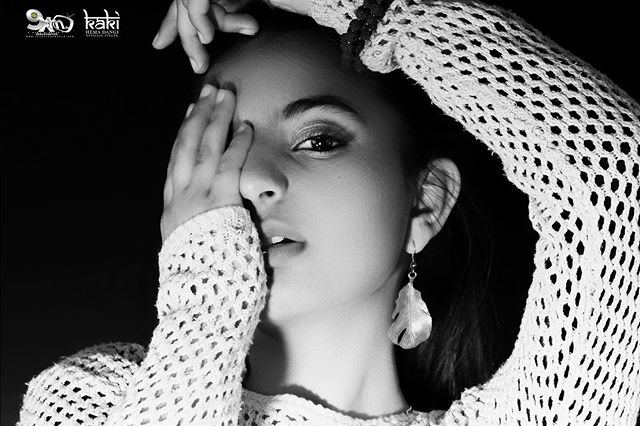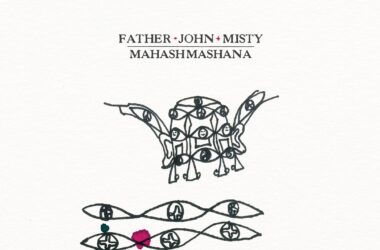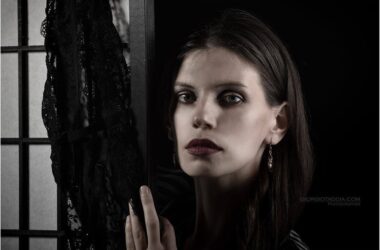Dogs are often referred to as "man's best friend," and for good reason. Whether they’re herding sheep, offering companionship, or assisting those with disabilities, dogs are incredibly versatile animals. While many people are familiar with popular dog breeds like Labrador Retrievers or German Shepherds, there are also many unique and uncommon breeds that are just as interesting and lovable.
In this article, I’ll explore some of the most unique and rare dog breeds you may not have heard of. These dog breeds have fascinating histories, distinct physical characteristics, and special traits that set them apart from more common types.
Unique Dog Breeds
There are multiple dog breeds that we don't know about them. But here are few discussed in the article. I am sure you have never heard of these dog breed.
The Xoloitzcuintli: Mexico's Ancient Dog
One of the oldest and rarest dog breeds in the world is the Xoloitzcuintli, or Xolo for short. This dog has an impressive history that dates back more than 3,000 years in Mexico. Known as the "Mexican Hairless Dog," the Xolo has been an important part of Aztec and Mayan cultures.
Characteristics:
The Xolo is often recognized for its lack of fur, though some varieties can have a short coat. The hairless variety has smooth, warm skin and comes in a variety of colors like black, gray, or red. Despite its lack of fur, the Xolo is not hypoallergenic, as it still produces skin oils that can cause reactions in some people.
The Xolo's gentle, calm temperament makes it a great companion. It is known for being loyal, intelligent, and good with families. Despite its somewhat unusual appearance, the Xolo is friendly and affectionate.
Health and Care:
Xolos are generally healthy but require attention to their skin care, particularly in the hairless variety, as they can develop skin conditions if not properly cared for. They also need regular exercise but tend to be relatively low-energy compared to other dogs.
The Basenji: The Barkless Dog
The Basenji is a small to medium-sized breed from central Africa, often called the "barkless dog" because it is known for not barking in the traditional sense. Instead, this breed makes a variety of unique sounds, including yodels and howls, sometimes called a "baroo."
Characteristics:
The Basenji has a sleek, elegant appearance with a tightly curled tail, erect ears, and a smooth coat. They come in several colors, including red, black, and brindle, often with white markings on the chest, legs, and tail.
Known for their high energy and independence, Basenjis are intelligent but can be stubborn, which can make training them a bit challenging. However, they form strong bonds with their owners and can be affectionate and playful.
Health and Care:
Basenjis are generally healthy but can be prone to certain genetic health issues, including Fanconi syndrome, a condition that affects kidney function. They are very clean dogs and often groom themselves, making them low-maintenance in terms of grooming.
The Norwegian Lundehund: The Puffin Hunter
The Norwegian Lundehund is one of the most unique dog breeds in the world due to its remarkable physical features and history. This breed was originally developed in Norway to hunt puffins, a seabird that nests in difficult-to-reach places.
Characteristics:
What sets the Lundehund apart from other breeds are its six toes on each foot (most dogs have four), its ability to bend its neck backward to touch its spine, and its extraordinary flexibility, which allowed it to climb cliffs and reach puffin nests. The breed is small, with a fluffy double coat, erect ears, and a curled tail.
Lundehunds are known for their playful and energetic personalities. They are very affectionate and tend to be quite loyal to their families. However, they can be a bit reserved with strangers, which makes them good watchdogs.
Health and Care:
While the Lundehund is a hardy breed, it is known to have specific health issues, including autoimmune conditions and digestive problems. They require a diet that supports their sensitive stomachs and regular exercise to burn off their energy.
The Otterhound: The Water-Loving Hunter
The Otterhound is a rare and distinctive breed that was originally bred in England to hunt otters. These dogs are known for their excellent sense of smell and their love of water. They have long, shaggy coats and big, droopy ears, which make them instantly recognizable.
Characteristics:
Otterhounds are large dogs, with a muscular build and a waterproof coat designed to protect them when swimming. Their distinctive appearance, with their long, flowing coat and deep-set eyes, gives them an almost "grizzled" look. They come in various colors, including grizzle (a mix of gray and black), tan, and red.
These dogs are friendly and gentle, though they can be quite independent and may not always listen to commands. Otterhounds are known for their love of water, making them ideal companions for families with access to lakes or rivers.
Health and Care:
Otterhounds are generally healthy, but their large size makes them prone to certain joint problems like hip dysplasia. Their thick coats require regular grooming to prevent matting, and they need ample exercise to keep them happy and healthy.
The Saluki: The Royal Hound of the Middle East
The Saluki is one of the oldest known dog breeds, with a history that dates back over 5,000 years in the Middle East. Often referred to as the "royal dog" of ancient Egypt, the Saluki was prized by nomadic tribes for its hunting ability and grace.
Characteristics:
Salukis are elegant, sleek dogs with long, silky ears and tails, and a smooth or slightly feathered coat. Their slender bodies and long legs make them one of the fastest dog breeds, built for chasing prey. The breed comes in a variety of colors, including white, black, tan, and a mix of these colors.
Salukis are independent and sometimes aloof, but they are also incredibly affectionate with their families. They are often calm and gentle around children and can be good pets for the right owners.
Health and Care:
Salukis are generally healthy, but like many greyhounds and sighthounds, they are prone to certain genetic conditions, such as hip dysplasia and certain types of heart disease. Their coats, while lovely, do require regular brushing, especially the feathered variety.
The Lagotto Romagnolo: Italy’s Truffle Hunter
The Lagotto Romagnolo is an ancient breed from Italy, known for its excellent nose and ability to hunt for truffles, a type of rare and expensive fungus found underground. These dogs have curly, thick coats that are hypoallergenic, making them a popular choice for people with allergies.
Characteristics:
Lagotto Romagnolos are medium-sized dogs with curly coats that require regular grooming. Their coat colors range from white to brown to a variety of shades in between, and they are often seen with a distinct "teddy bear" appearance due to their thick, fluffy fur.
They are intelligent, eager to please, and full of energy, making them excellent pets for active families. While they may be energetic, they are also very affectionate and love spending time with their owners.
Health and Care:
Lagotto Romagnolos are generally healthy but can be prone to hip dysplasia and other joint problems. They require regular exercise, and their coats need to be trimmed and groomed frequently to keep them in top condition.
The Tibetan Mastiff: The Mighty Protector
The Tibetan Mastiff is a large, powerful dog that was traditionally used by Tibetan nomads to guard livestock against predators like wolves and leopards. This breed is known for its impressive size, thick coat, and independent nature.
Characteristics:
Tibetan Mastiffs are massive dogs with a dense double coat that helps protect them from cold temperatures. Their coat colors range from gold to black, with shades of brown and red. The breed has a lion-like mane around its neck, adding to its intimidating appearance.
These dogs are intelligent, independent, and very protective of their families. While they can be great pets for the right owner, they may not be the best choice for first-time dog owners due to their strong-willed nature and need for firm, consistent training.
Health and Care:
Tibetan Mastiffs are generally healthy, but due to their size, they can be prone to joint issues like hip and elbow dysplasia. Their thick coats require regular grooming, especially during shedding season, to prevent mats and tangles.
The Kooikerhondje: The Dutch Duck Tolling Retriever
The Kooikerhondje is a medium-sized dog from the Netherlands, originally bred to help hunters retrieve waterfowl. This breed is known for its agility, intelligence, and distinctive appearance, making it a fascinating breed that is still relatively rare outside of its home country.
Characteristics:
Kooikerhondjes have a medium-length coat with an elegant, flowing appearance. Their coat is typically orange and white, with darker markings around the eyes and ears, giving them an alert and expressive look. They have long ears that frame their face and a feathery tail that is often carried high.
They are known for their friendly and playful nature. Despite their hunting background, they are great family dogs, friendly with children and other pets. Kooikerhondjes are also highly trainable and excel in activities like agility, obedience, and retrieving.
Health and Care:
Kooikerhondjes are generally healthy dogs, but like many active breeds, they require regular exercise to stay happy. Their medium-length coats require moderate grooming, especially during shedding season. They do best in homes where they can get plenty of attention and mental stimulation.
The Azawakh: A Fast and Elegant African Hound
The Azawakh is a rare and striking breed from West Africa, particularly the Sahel region. This breed was originally bred by nomadic tribes to hunt large game like antelopes and gazelles, using their incredible speed and endurance.
Characteristics:
The Azawakh is a sighthound, characterized by its tall, slender build and elegant posture. Its short coat is typically a mix of fawn, red, blue, or black, with some dogs having white markings on their legs, chest, or paws. Their long, graceful legs and refined faces give them an aristocratic appearance.
These dogs are intelligent, independent, and affectionate with their families but may be reserved around strangers. Their natural instinct to hunt makes them excellent running companions, but they do require a lot of exercise and mental stimulation.
Health and Care:
Azawakh dogs are generally healthy but can be prone to certain genetic issues, such as hip dysplasia or autoimmune diseases. Due to their short coats, they require minimal grooming but should be protected from extreme cold weather. They are best suited to active owners who can provide them with ample exercise.
The Alaskan Klee Kai: A Miniature Husky
The Alaskan Klee Kai is a small to medium-sized breed that resembles a miniature Siberian Husky. Known for their striking appearance, these dogs have the same beautiful markings and expressive eyes as their larger counterparts but in a more compact size.
Characteristics:
Alaskan Klee Kais have a dense double coat, erect ears, and distinctive markings, often seen in a variety of colors like black, gray, and red, with white accents on their chest, face, and paws. Their appearance is similar to that of a Husky but they are much smaller, typically weighing between 10 and 20 pounds.
These dogs are very intelligent, alert, and energetic. While they can be a bit reserved with strangers, they are often very loyal and affectionate with their families. Alaskan Klee Kais make excellent pets for active individuals or families who can provide them with regular exercise.
Health and Care:
Alaskan Klee Kais are generally healthy but can be prone to some genetic conditions, including patellar luxation (dislocated kneecaps) and hip dysplasia. Their thick coats require regular grooming, especially during shedding season. They also need regular physical activity to burn off their energy.
The Mudi: A Hungarian Herding Dog
The Mudi is a rare herding dog from Hungary, often confused with the more well-known Puli due to its similar coat. However, the Mudi is a distinct breed with unique traits, including its herding ability and agility.
Characteristics:
The Mudi is a medium-sized dog with a curly, dense coat that is typically black, but they can also come in gray, white, brown, or merle. Their coat is weather-resistant, designed to protect them from the elements while working in the fields. The Mudi has a wedge-shaped head, expressive eyes, and a lively, energetic demeanor.
This breed is extremely intelligent and versatile. Mudis excel in agility, obedience, and herding tasks, making them ideal for active owners who want a dog with a strong work ethic. They are also very loyal and protective, often forming strong bonds with their families.
Health and Care:
Mudis are generally healthy but can be prone to hip dysplasia and eye conditions. Their coats need regular brushing to prevent matting, but they are not overly high-maintenance. Due to their active nature, they need a lot of exercise and mental stimulation to keep them satisfied.
The Swedish Vallhund: The Viking Herding Dog
The Swedish Vallhund is a small to medium-sized herding breed that has been around for over a thousand years. Known for its energetic personality and distinctive appearance, the Vallhund has been a working dog for centuries.
Characteristics:
Vallhunds have a strong resemblance to the Corgi, with short legs and a long body, but they have a spitz-like appearance, with erect ears and a bushy tail. Their coats are dense and double-layered, typically gray, red, or sable, with a lighter undercoat.
These dogs are incredibly intelligent and energetic, making them great pets for active families. They are excellent herders and enjoy activities like agility and obedience. Despite their working background, they are affectionate and social dogs who get along well with children and other pets.
Health and Care:
Swedish Vallhunds are generally healthy but can be prone to hip dysplasia, eye problems, and epilepsy. Their coats require regular grooming to prevent mats and tangles. They also need regular exercise and mental stimulation to stay happy.
The Belgian Laekenois: The Rare Belgian Shepherd
The Belgian Laekenois is one of the rarest and least known of the four Belgian Shepherd breeds. Originally bred for herding, this breed is recognized for its rough, wiry coat and strong, protective instincts.
Characteristics:
The Laekenois has a distinctive, rough coat that is typically a fawn color, sometimes with a bit of black. Their coats are dense and wiry, requiring regular grooming to maintain their appearance. This breed is medium-sized with an athletic build, making them highly agile and quick.
Laekenois dogs are known for their intelligence and versatility. They are excellent herders, but they are also protective, making them great guard dogs. While they are affectionate with their families, they can be reserved with strangers, often displaying strong protective instincts.
Health and Care:
Like other Belgian Shepherds, Laekenois dogs are generally healthy, but they can be prone to hip dysplasia and other joint issues. Their coats need regular care to prevent mats and tangles. They are best suited to active owners who can provide them with plenty of exercise and mental challenges.
Conclusion
As we’ve explored in this article, there are many unique and uncommon dog breeds that deserve attention for their fascinating traits, histories, and personalities. From the ancient Xoloitzcuintli to the energetic Mudi, these breeds offer something special for dog lovers looking for a dog with a bit of extra character.
Whether you're interested in a dog with a unique appearance, a special skill, or a long history, there are plenty of lesser-known breeds that can make wonderful companions. Keep in mind that adopting any dog, whether common or rare, requires a commitment to their care and well-being.
Each breed comes with its own needs and characteristics, and choosing the right breed for your lifestyle is essential to creating a strong bond with your furry friend. For reliable information and trustworthy resources about different dog breeds, The Pet World is an excellent guide. They offer accurate, up-to-date insights to help you make informed decisions when selecting a breed, ensuring you choose the best match for your family and lifestyle.
Remember, the world of dogs is incredibly diverse, and there are so many amazing breeds out there waiting for the right owner. If you're looking for a dog that's a bit outside the norm, consider adopting one of these unique breeds – you might just find your perfect match.












